Pinarello today unveiled a new Endurance range in the shape of the new Dogma X and X Series with the intention of offering performance coupled with comfort for the endurance-minded rider. There are new geometries, wider tyre clearance, claims of increased vibration absorption, and a new X-Stays concept that Pinarello claims offers all the comfort with none of the lateral flex.
The new bikes join the X1 and X3 in Pinarello’s existing Endurance range as the brand expands its offering. The broad design direction also comes in response to an evolution of road cycling it says it identified in market demand, where most riders now recognise the best bike for WorldTour racing might not be the best bike for their type of riding. Pinarello says the new Endurance range clearly differentiates from its performance range to cater to the growing demand for bikes built to meet the demands of the rider for whom an aggressive performance bike is not the best fit.
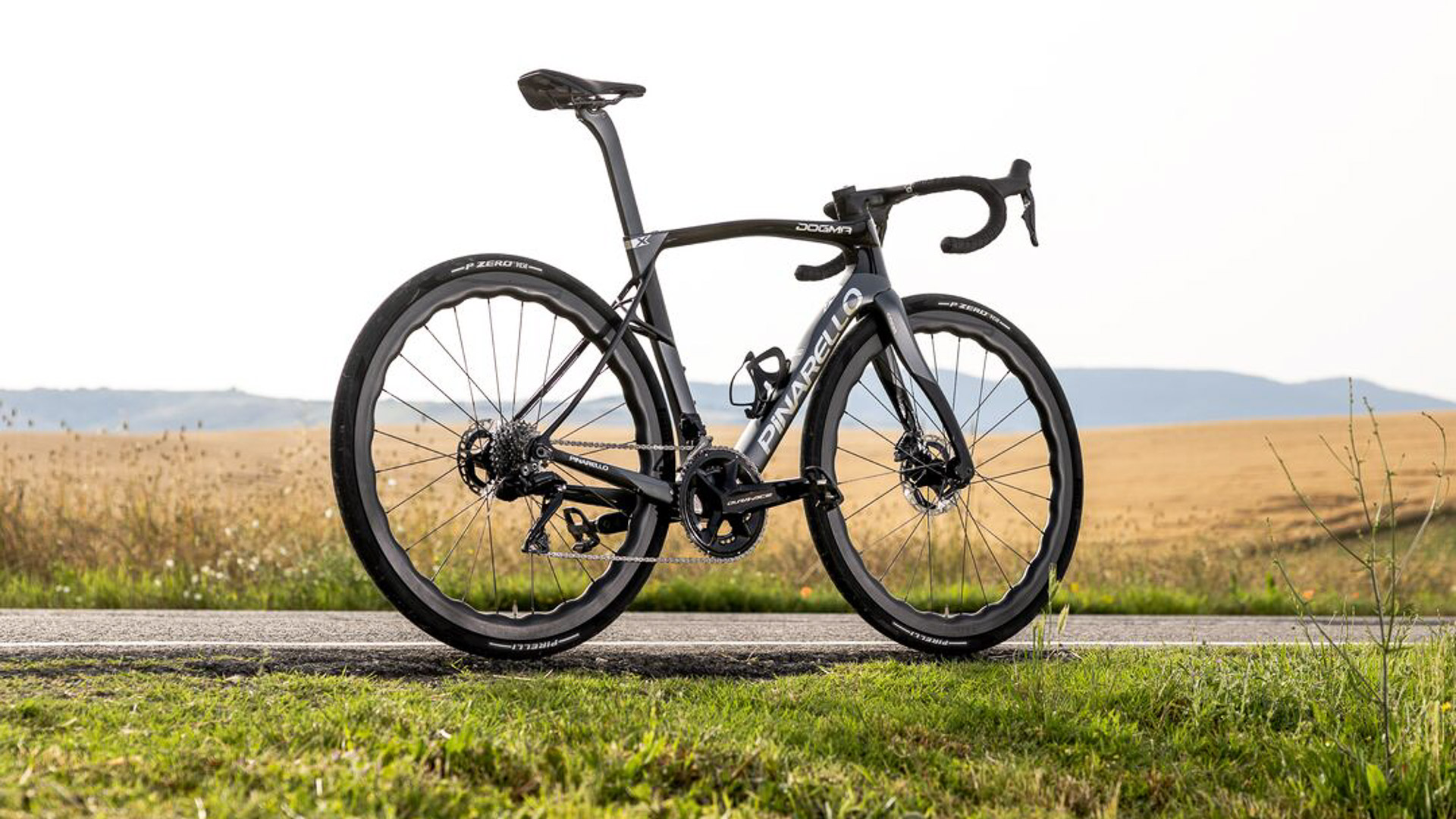
Pinarello says the new bikes offer “a Dogma with different priorities,” focusing on a balance of performance and ride comfort, rather than uncompromising stiffness or aero-to-weight ratios. In other words, Pinarello sees its Endurance range as the bike for riders who value comfort and enjoyment more than absolute performance.
That said, Pinarello was at pains to explain its take on endurance still means roughly 80% performance and 20% comfort, pointing out the new bikes – especially in the case of the Dogma X – are “high-performance endurance bikes,” with the goal to make a light bike with the right balance between stiffness and comfort “without forgetting to be a Dogma.”
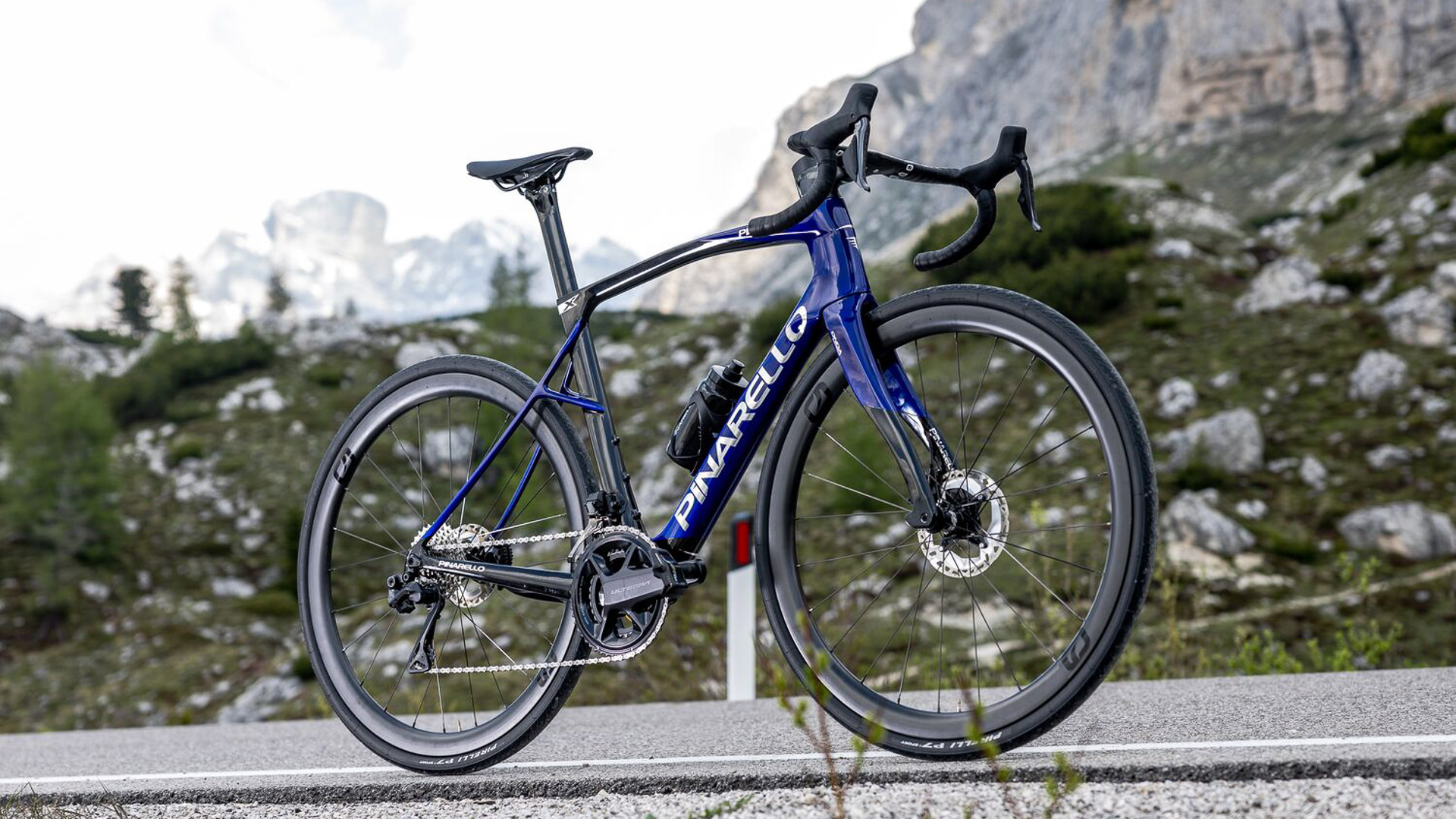
All the above
So, how does one combine performance, comfort, stiffness, and compliance? Well, in this case, Pinarello has effectively taken its Dogma F and made it more accommodating: more accommodating to the rider and to the tyres with a host of changes to geometry, tyre clearance, and, if you’ve not spotted it by now, an entirely different rear triangle.
We’ll get back to that new rear triangle in a second, but let’s first cover the basic (read: straightforward) updates.
Pinarello essentially has two new Endurance pricing tiers to match its existing performance range. The Dogma X joins the endurance range at the same price point as the Dogma F, while the new X-Series bikes complement the more affordable F-Series bikes on the performance side.
It’s not just the pricing that matches as Pinarello has used the same Toray T1100 carbon fibre in the Dogma X as it uses in the Dogma F. The X9 and X7 bikes feature the same T900 found in the F9 and F7 frames, promising a blend of performance, lightness, and vibration mitigation. Continuing the theme, the X5 sticks with the T700 blend found in the F5, prioritising vibration absorption, albeit with a weight increase. As you might expect from Pinarello, the brand has incorporated its Think Asymmetric design concept into the chainstays, bottom bracket, and down tube across each of the new frames.
At the heart of both new range offerings is Pinarello’s Endurance and Endurance+ geometry. The Dogma X features Pinarello’s new “Endurance geometry” with 11 size options designed to be more aggressive and aero than the existing Endurance+ geo but also slightly more relaxed than the Dogma F, with increased stack and less reach.
The X-Series bikes, on the other hand, feature Pinarello’s existing Endurance+ geometry across nine sizes, providing a further relaxed and more upright position. The intention for both geometries is to fit options for all cyclists without requiring excessive spacers or up-sizing frames.
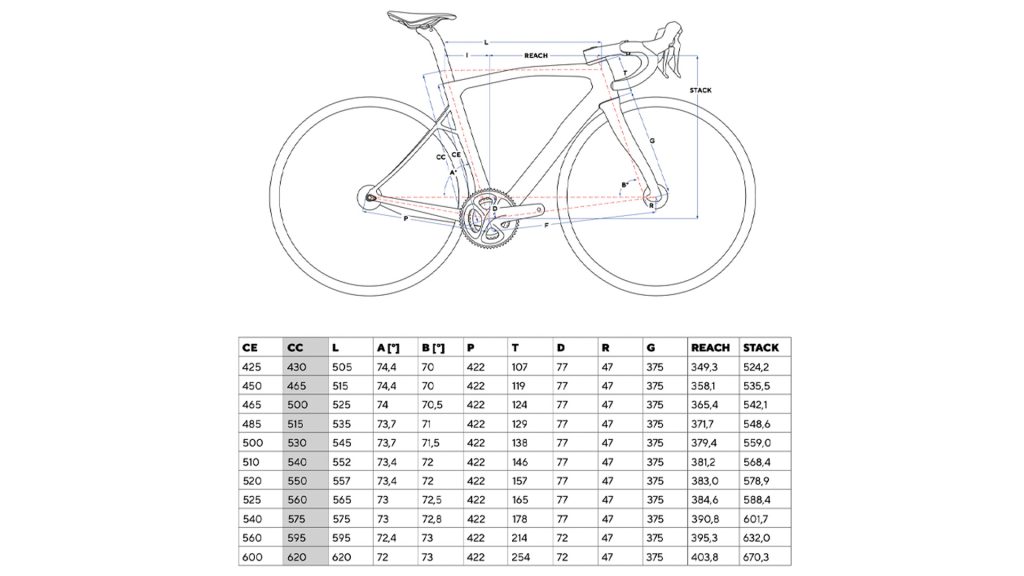
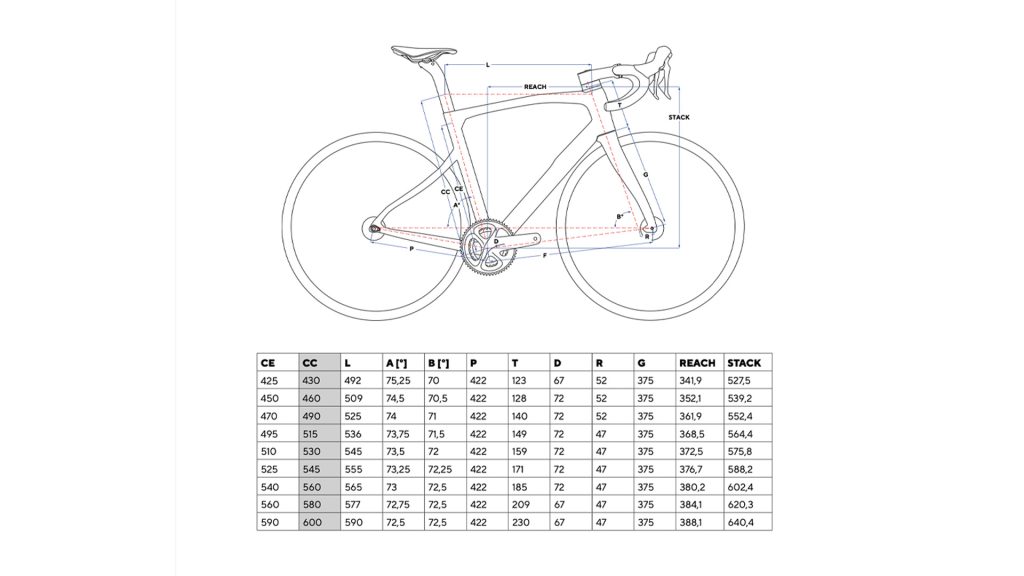
As for what that means in numbers, comparing a Pinarello size 525 (aka 56) Dogma F to the identical size in the two new bikes, we can see the new Dogma X offers 6.1 mm shorter reach (390.7 versus 384.6) and 18.2 mm taller stack (570.2 versus 588.4) while the X-Series bikes are a further 4.4 mm shorter (reach – 380.2) and 14 mm higher (stack – 602.4). All three feature the same 73° seat tube angle, but the new head tubes are just over half a degree slacker at 72.5°. Couple that with a 4 mm increase in the new fork rake, and all told, the new bikes actually feature the same 59 mm trail figure as the Dogma F when comparing like for like 28 mm tyres, but this trail figure increases to 61 mm when calculated with the 35 mm tyres intended for the new bikes.
Speaking of tyre clearance, unsurprisingly, Pinarello identified wider tyres as a key feature in increasing comfort. As such, there’s space for 35mm tyres on both the Dogma X and X Series frames. That 35 mm is obviously much less than other new frames launched in the same endurance space in recent times. Pinarello explained the 35 mm clearance figure is actually a “very roomy 35 mm,” when asked by Escape Collective why it hadn’t followed suit in offering 38 or even 40 mm of clearance. That said, Pinarello also made no bones in explaining the new bikes are not all-road, gravel, or even entirely comfort-focused bikes, but rather, “high-performance endurance road bikes,” claiming any further increase in tyre clearance would compromise that performance approach.
Naturally, Pinarello had to adapt the frame to accommodate that wider tyre clearance, including the use of taller and wider forks, plus wider and longer stays. As such, Pinarello told us there is some slight aero trade-off in accommodating the extra clearance and improved comfort, but that given aero was secondary to the primary objective of improved ride comfort with the new bikes, it found the increase was more than acceptable and perhaps even less than expected.
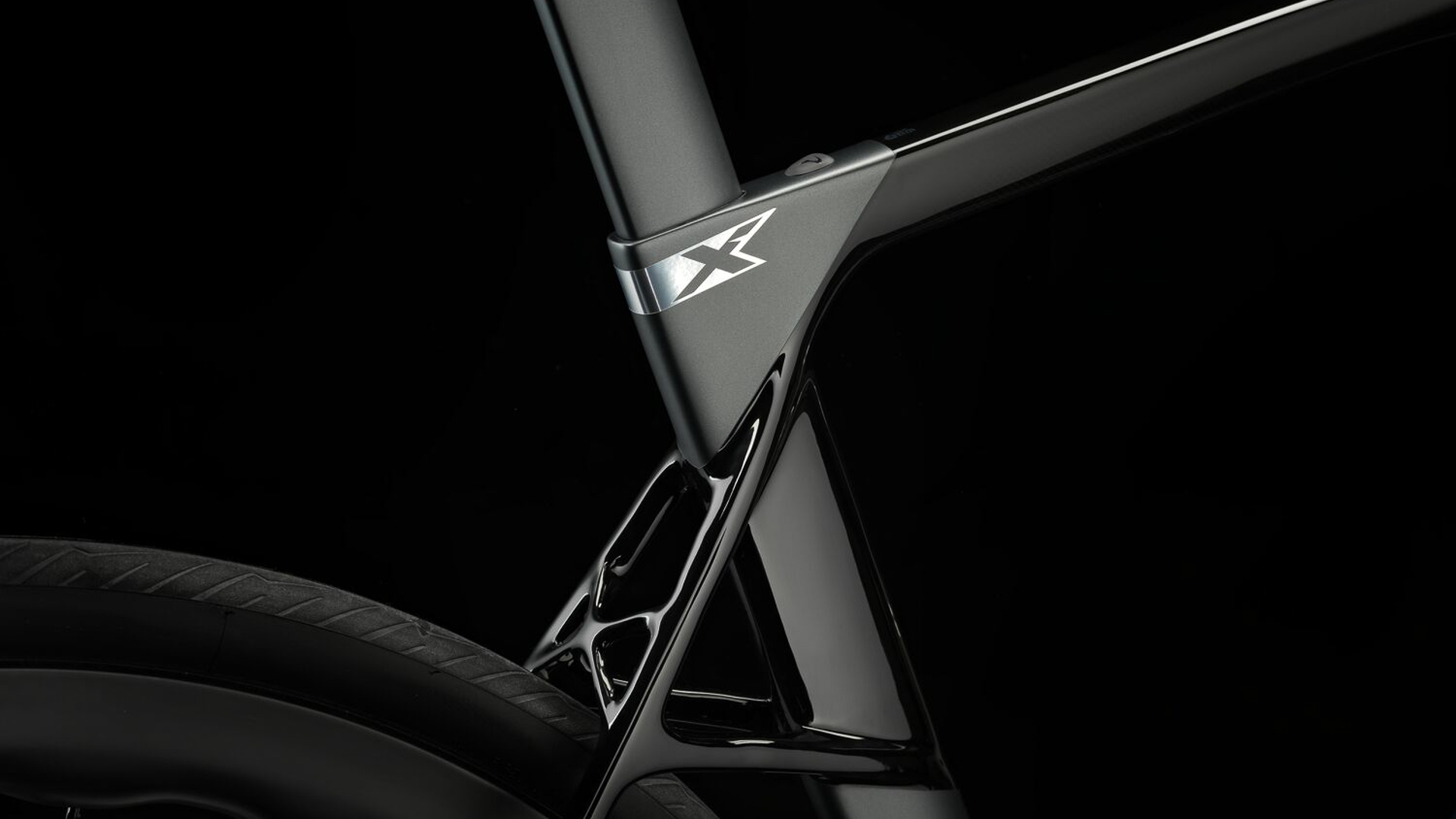
X by name and X by nature
So where does the improved comfort come from and how is performance maintained when comfort is seemingly improved? Pinarello’s answer is slightly different between the two new frame series, so let’s start with the Dogma X.
Pinarello says the new bikes mark a change in endurance bikes. No longer bound by tube dimensions or narrower tyres, Pinarello says “manufacturers shouldn’t have to rely on heavy suspension systems to offer compliance at the expense of performance.” That’s an interesting take coming from the brand, which on several occasions introduced suspended versions of its performance road bikes, and Pinarello admitted as much in saying it has had “other solutions for endurance-orientated bikes in the past.” The brand’s new take on the comfort-to-performance balance comes from analysing and developing vibration absorption options without sacrificing frame weight or bottom bracket stiffness. The result is a new technical solution it has dubbed X-Stays.
To understand Pinarello’s ambition with the X-Stays we need to first go back in time to before those suspended Dogmas and the early Team Sky days. Remember the Kobh 60.1? That bike featured a similar concept to the new Dogma X: an endurance frame promising added comfort in a Dogma-esque bike, thanks to slightly longer chainstays than the Dogma of the day and long and arcing seat stays. That makes sense, of course, if you want to add comfort or compliance to a bike, it’s hard to look past long, thin, arced seat stays. Such stay designs help dampen vibrations, provide some additional compliance and hence could provide the improved ride comfort Pinarello has promised with the Dogma X.
The problem, according to Pinarello, with maintaining lateral stiffness with such arced stays and modern disc brake frames is the gaping void the rim brake bridge previously occupied. Without that brake bridge, Pinarello claims the independent, thin, and arcing seat stays allow for too much performance-killing lateral flex.
That’s where Pinarello claims the X-stays come in, which, according to Pinarello, are an innovation designed to “ensure the highest levels of comfort without sacrificing performance.” The X-Stays feature a specific “vibration dampening carbon layup” and an X-shaped bridge between the two independent seat stays plus dual seat post-attachment point stays.
Pinarello claims the benefits are twofold, with the X-bridge ensuring lateral stiffness is maintained even with the inclusion of the slimmer seat stays and the elongated chain stays required for increased tyre clearance, while the additional seat stay attachment points are said to “disperse forces on two points of the seat tube to further reduce vibration transfer to the rider’s back.” Pinarello claims the Dogma X bikes would simply lack the lateral stiffness required to meet their performance focus if it was not for the X-bridge between the stays.

As for the X-Series, that’s more X by name, but not quite by nature. Pinarello explains the X-Series further prioritises a comfortable riding position and maximising vibration absorption, hence the more relaxed geometry mentioned earlier and also a different rear triangle carbon layup but also a willingness to forgo the extra lateral stiffness the X-Bridge is said to offer.
The X5, 7, and 9 bikes adopt the same slimmer, arced seat stays and the dual attachment point upper stay design as the Dogma X, but drop the X-bridge in a design Pinarello is dubbing the “Flexistays 2.0,” an update to the curvier and dropped Flexistays found on the X1 and X3. Pinarello claims this design combination ensures vibration-absorbing comfort through the stays, again enhanced by further dispersing forces on two points of the seat tube while mitigating the weight penalty associated with the lower-spec carbon.
Both designs are about as wild-looking as modern road frames get, and without having ridden the bike, it’s impossible to tell if they work, but we, as I am sure you do, had questions which we put to Pinarello this week.
The added comfort from the slimmer stays and stiffness element of the X-bridge design certainly makes sense. We already dug into the benefits of slimmer and arced stays and these triangulated shapes, as seen on the X-bridge, are known to help increase stiffness. The bridges help triangulate shear loads, those being between the seat stays in this case, but they are known to be heavy.

Furthermore, all that extra bracing, especially with the dual attachments on the seat tube, doesn’t exactly suggest a comfortable ride or increased compliance and again looks rather weighty, not to mention the aerodynamic drag.
However, as mentioned earlier, Pinarello claims the associated aero penalty is at a low and acceptable level given the performance: comfort objectives for this bike. Pinarello told Escape Collective it ran a lot of aero analysis, but aero was a secondary objective. Pinarello didn’t have the exact numbers on hand, but explained that on a high level, the Dogma X is relatively close to the Dogma F, considering the comfort inventions.
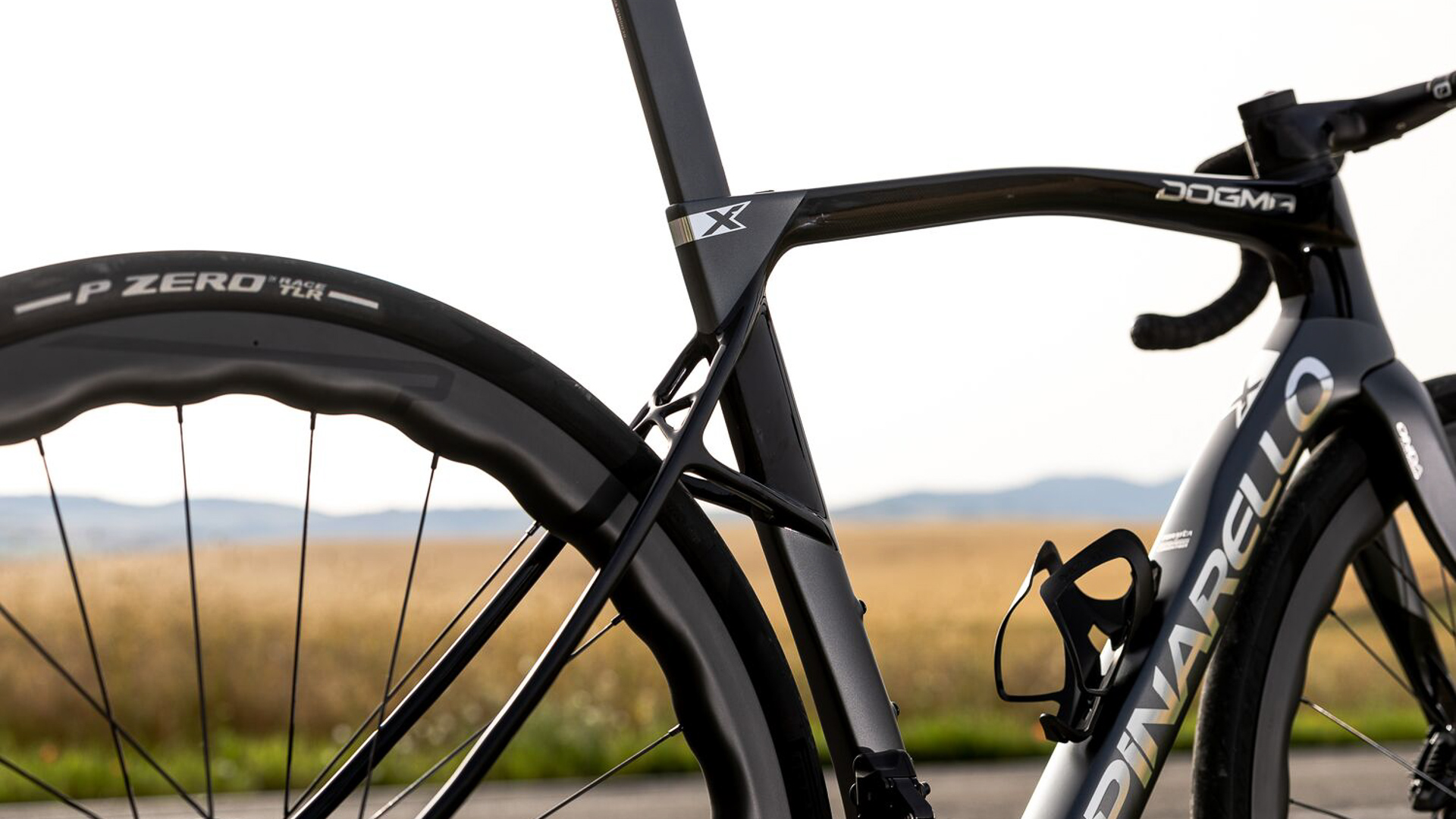
Comfort should of course be a priority in an endurance bike, so this is a point I can get behind if accurate. That said, the low penalty claim from a new seat stay interface doesn’t exactly fit with the claims Pinarello made for the seat tube area after identifying it as an exceptionally critical location in aerodynamic performance during the development of its Bolide F HR 3D for Dan Bigham and Filippo Ganna’s successful Hour Record attempts. Granted, that was a different bike in a different environment, but the seat tube and stay areas are considered by many as key to overall aero performance, secondary only to the frontal profile.
As for weight, Pinarello claims an impressive weight of 7.2 kg for the Dura-Ace and Princeton-equipped Dogma X, which, if accurate, makes it one of the lightest endurance bikes on the market and 200 grams less than the Dogma F (albeit a larger size) I reviewed last year.
Nevertheless, it seems an overly complicated solution to a problem with easier fixes. It is, after all, already a decade or more ago that brands first started moving to dropped stays, claiming both comfort and aerodynamic gains, with perhaps also a little weight saving. Why Pinarello has now reverted back to a higher stay design combined with much more complexity to achieve the same benefits is a bit of a head-scratcher. I can’t help but think all that extra bracing also helps with addressing the seat tube flex I identified in the Dogma F, a point contested by Pinarello.
Again, though, I haven’t ridden this bike, so only time will tell how effective the new X-Stays and Flexistays design truly is.

Yes, please
Setting the performance claims aside for a moment, what I can get 100% behind is Pinarello’s decision to effectively make a WorldTour-looking bike for the non-WorldTour riders. I have a tough time with the “Win on Sunday, sell on Monday” effect the WorldTour has. As cool as the professionals’ bikes are, all too often they are not the right bike for the less performance-focused public. How many times have we seen a rider struggling with a less-than-ideal fit on a dedicated performance bike? By taking the Dogma F aesthetics and applying two more-relaxed geometry options, everyone can have their cake and eat it. There’s still the F for those looking an aggressive position, the X-Series offering a high and relaxed position, and the Dogma X somewhere in between. That I like.
Pinarello is sticking with its tried and tested Italian thread bottom bracket, telling Escape Collective, “we do not like press fits.” There’s also no place for SRAM’s Universal Derailleur Hanger (UDH). While not exactly earth-shattering news in either direction, the explanation Pinarello gave us is interesting. As mentioned earlier, Pinarello reiterated the new X and X-Series bikes are not gravel bikes or all-road bikes, but high-performance endurance road bikes. What was interesting was the brand mentioned conversations with “the UDH supplier” (presumably SRAM) and determined “there was no need for UDH.” Now perhaps we are UDH Trojan horse on the brain, but if Pinarello decided there was no need for UDH on a new 2023 road bike following conversations with SRAM, surely that questions any speculation of the next SRAM road groupsets featuring a Transmission sandwich-style mount.
The Dogma X, the X9, and the X7 are all equipped with the Talon Ultra Light integrated handlebar featuring Pinarello’s TCiR internal cable routing. The X5 is delivered with a traditional two-piece handlebar and stem but still features internal cable routing. The Dogma X is only compatible with electronic groupsets, whereas the X-Series is mechanically compatible. The good news: all the new bikes are compatible with two-piece bar and stem solutions and customers ordering the Dogma X frameset only option can specify the handlebar size the desire.
The bikes are also available as of today with prices starting at US $6,000 / £5,700 for the X5 with Fulcrum racing 5 wheels and that two-piece bar and stem. The pricing tops out at US $16,000 for the Dogma X with Campagnolo’s new Super Record Wireless and Bora WTO 45 wheelset. Riders also have the choice of 105 Di2, Ultegra Di2 and Force Etap AXS equipped X-Series bikes, plus SRAM Red Tap AXS and Dura Ace-equipped Dogma X builds with Princeton Carbon Works Grit 5440. A Dogma X frameset will set you back $US 6,950 / £5,500.
The Dogma X is available in Xolar (SIC) Black, Sun (red), Blue, and Green plus custom options through the Pinarello MyWay program. While the X-Series bikes feature Xpeed gold, red and blue plus Xolor black and white.
Finally, the claimed frame weights for each model are as follows:
Dogma X
Frame: 950g Fork: 400g
X9 & X7
Frame: 960g Fork: 400g
X5
Frame: 990g Fork: 400g
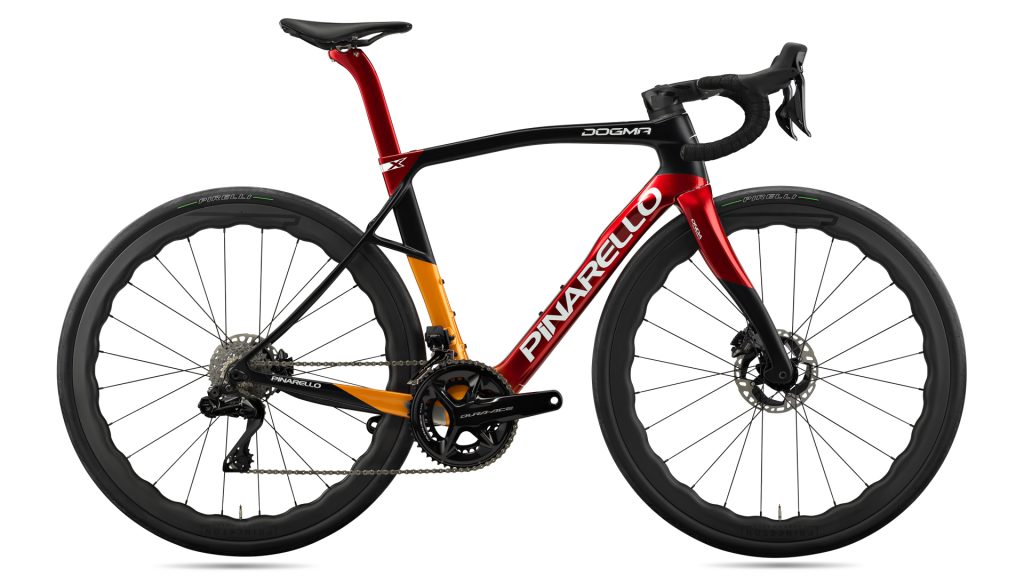

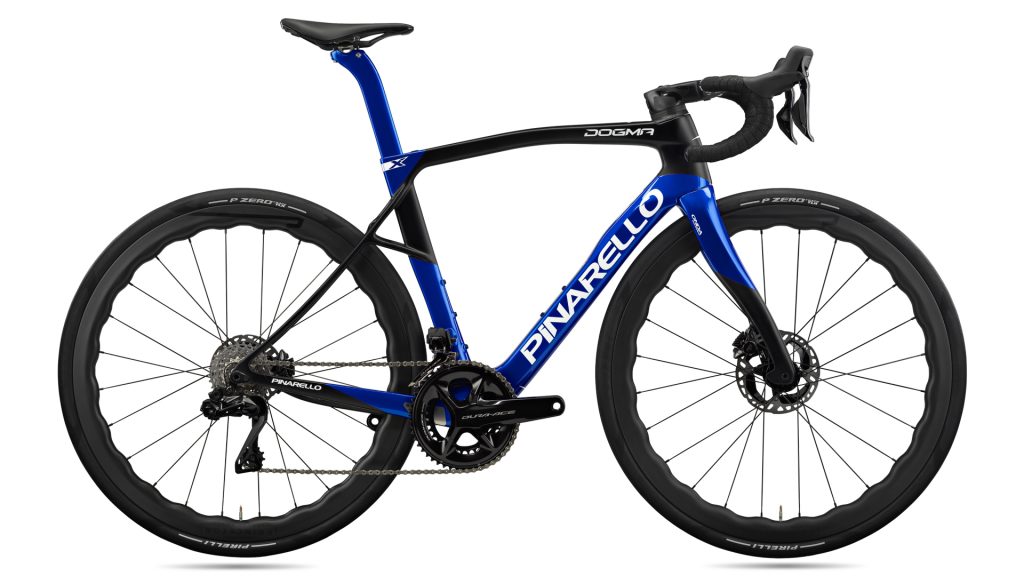

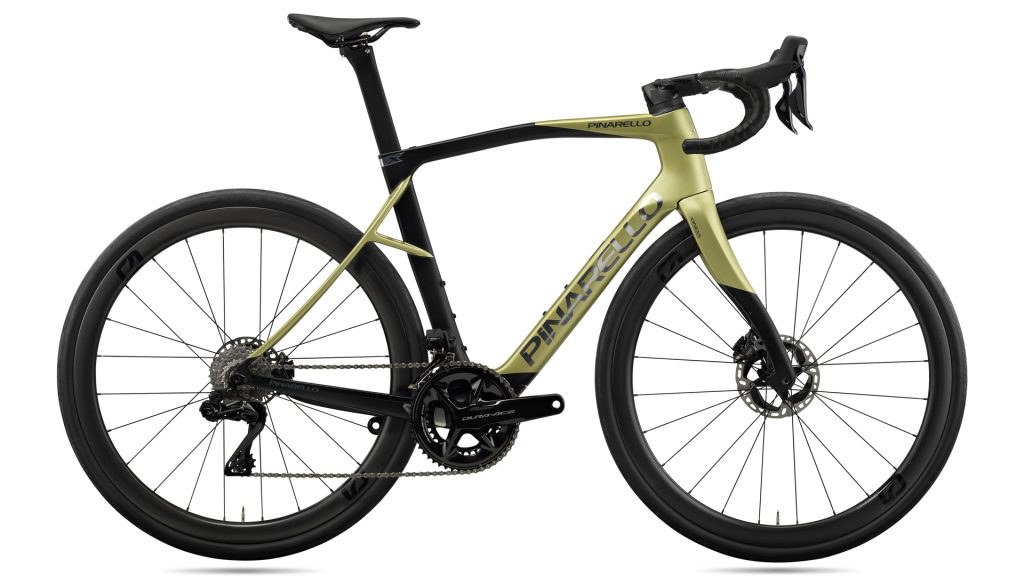


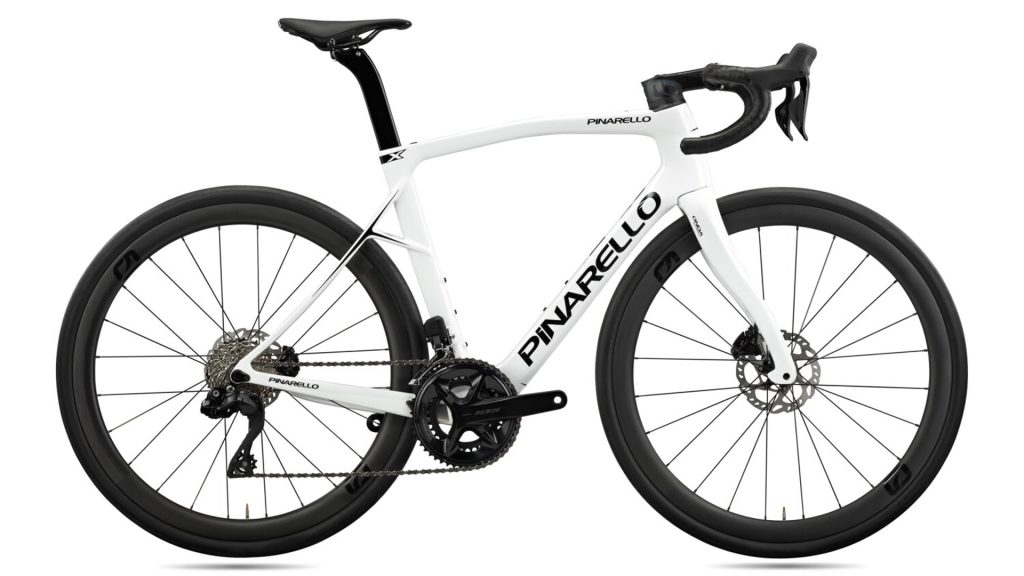
What did you think of this story?
